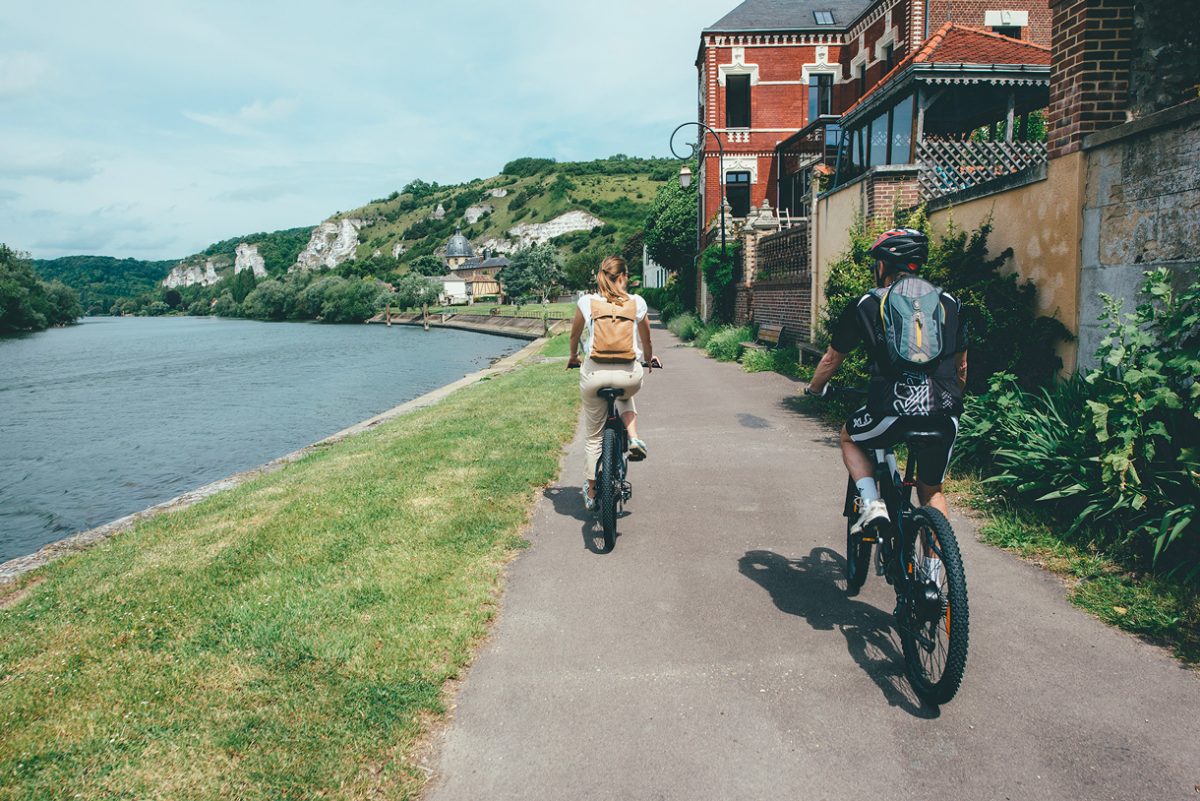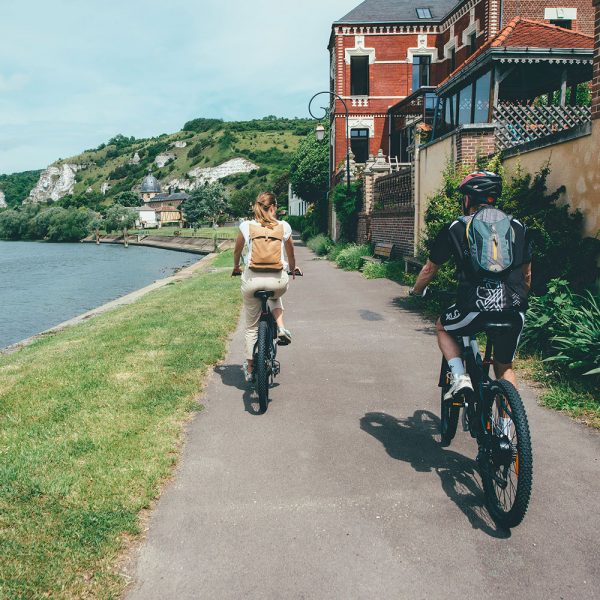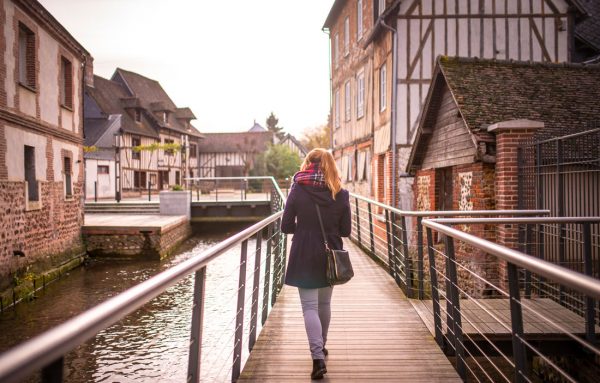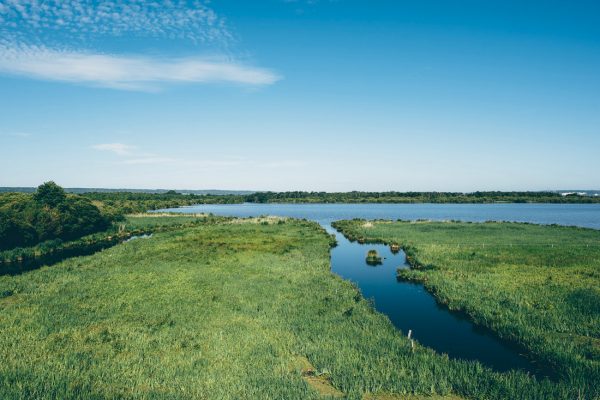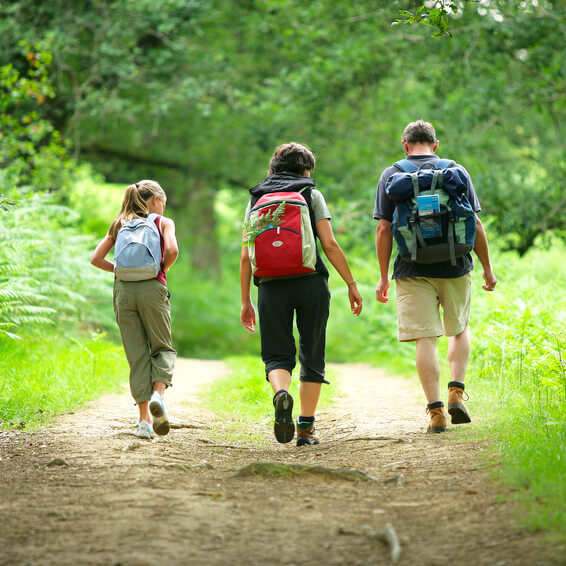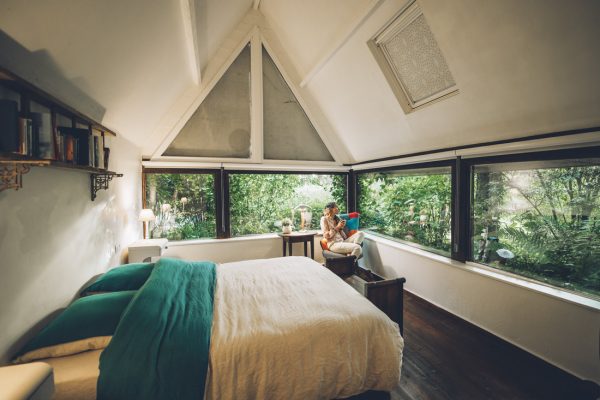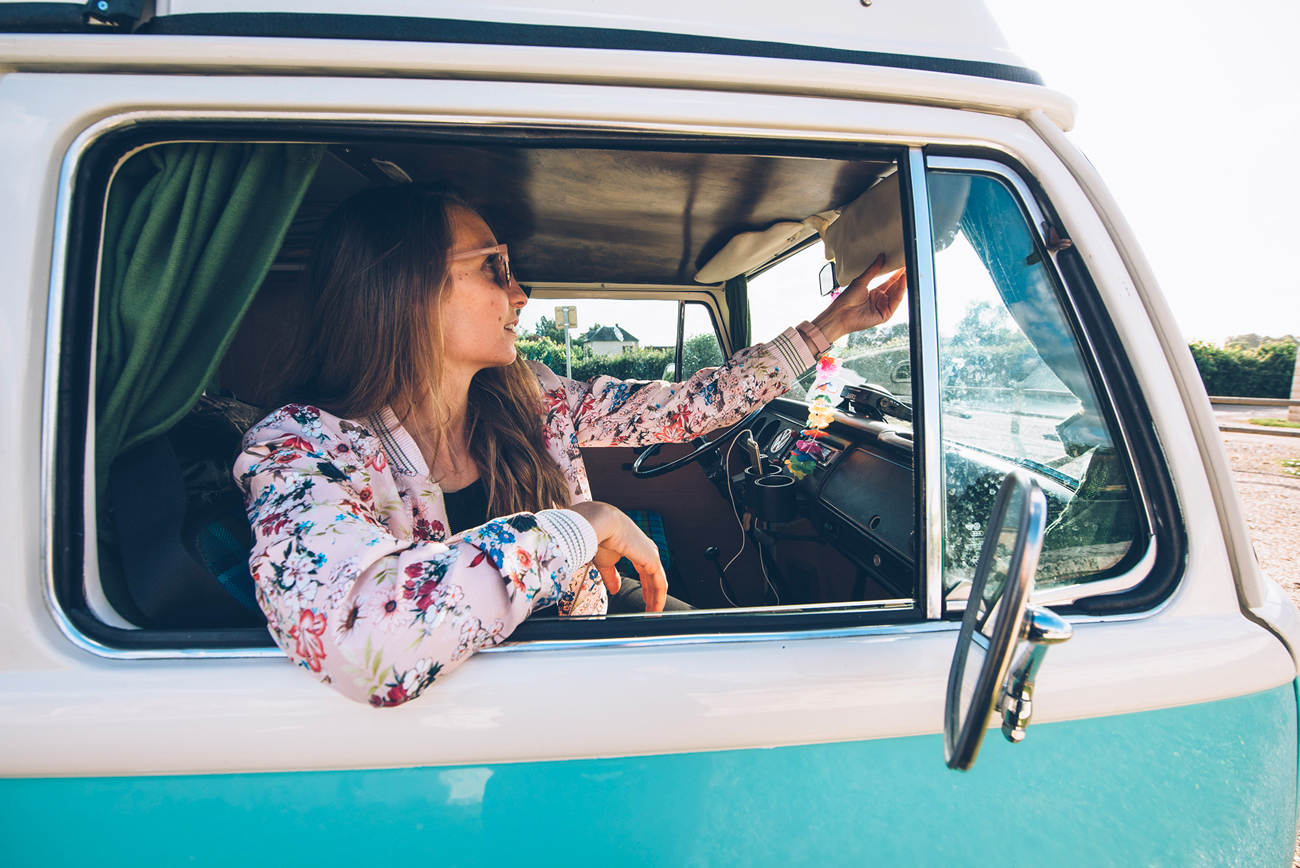Gateway to Normandy from western Paris, the Eure is one of the five French counties, or départements, that make up the region of Normandy. Coming from Britain or Ireland, perhaps via the A28 motorway or then the Normandy ports of Dieppe, Le Havre, Caen-Ouistreham or Cherbourg, the county extends south from the Seine Valley. Although the Eure is a county that has been encouraging slow living and escaping the stresses of modern life for many years now, one salient fact remains true at time of writing – that 91% of tourists and day-trippers who come to discover the beauty of the likes of Giverny, Lyons-la-Forêt, the Marais Vernier marshlands or Le Bec-Hellouin Abbey arrive by car. That’s undeniable, and it’s true that, for certain trips around here, a car is a necessity. However, once you’ve arrived where you’re staying, do consider leaving the car behind to explore that historic site or craft market on foot, by bike, by train, or using other modes of public transport. Let’s travel along together a while, using the Eure’s transport network and…
toot-toot goes the car
Our destination is exceptionally easy to reach by car, especially given the two major motorways that cross it, the A13 and the A28, but there are other options.
The A13, historically France’s first motoway, crosses Normandy east to west, linking Paris to Caen. It’s the preferred route for Parisians and those from Greater Paris’s Ile de France Region to reach the Normandy coast… but also the county of Eure, which has remained so natural and unspoilt.
If you decide to enjoy a little restorative pause at the Vironvay motorway rest area (just before the Heudebouville motorway toll), that’ll be the first place you can set foot in the Eure, coming along the motorway from the east.
The A13 offers the most straightforward way for many motorists to reach Vernon, Giverny or Pont de l’Arche, just to the east of the motorway, or Pont-Audemer (nicknamed Normandy’s Little Venice) or Beuzeville just to the west.
The A28 motorway is the A13’s younger sibling. The two share a 20km stretch together. Opened in 2005, the A28 crosses the county north to south, linking Abbeville to Tours, and as such is the most obvious, fastest route coming down from Calais or Boulogne.
Crossing the Eure, the A28 motorway affords you easy access to Le Neubourg, Evreux, Harcourt and Bernay.
A whole network of trunk, county and parish roads also crisscross the Eure, with a total of 13,881km of roads offering all manner of possibilities for you to make up your own route through the county, going at your own pace, exploring our exceptionally rich cultural and natural heritage.
A car doesn’t count among the most eco-friendly transport options if travelling alone, or using it for frequent short journeys. However, when there are four or five people in a car, or when making use of car sharing schemes, the car isn’t such a bad option.
The county of Eure counts over 13 car-sharing locations at time of writing and an app, www.covoiturage27.net, to make users’ life easier.
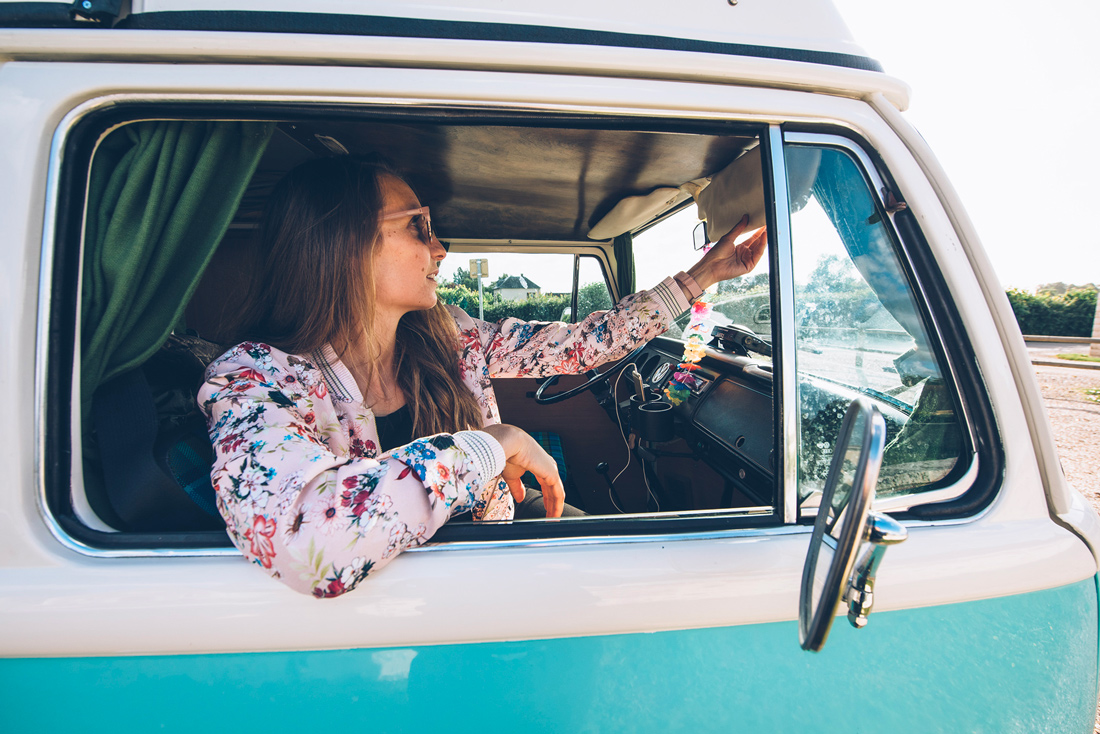
choo-choo goes the train
As an alternative to the car, the train is the perfect transport service for linking the Eure’s urban zones, including Evreux, Vernon, Bernay, Gisors, Gaillon and Val de Reuil, using the railway lines also connecting with Paris, Rouen and Caen.
In association, all the services such as accommodation providers and tourist offices, tie in with these train lines.
If you wish to plan your tourist trips linking up different modes of public transport, it is possible. Some have already put this to the test and found that it works well.
For example, from Vernon bus station, you can reach Giverny via shuttle bus or via a cycle path.
From Val-de-Reuil, the SEMO (the local urban transport network) bus lines can transport you to within a few minutes of Louviers or the Parc de Loisirs de Léry, a popular outdoor leisure centre.
From Gaillon, using line 290 to Les Andelys, you can be dropped off at the foot of Richard the Lionheart’s iconic Seine-side castle, Château-Gaillard.
You can reach the eastern Normandy border town of Gisors and its medieval castle either via regional TER train, or via the Transilien J line.
It may seem self-evident, but clearly an integrated transport system is essential for the Eure, and hence you’ll find available, close to the county’s stations, taxis, public transport options, for the urban networks and beyond, and car parks, if you choose a mixed transport solution, travelling around partly by car, partly by train.
As already alluded to, the Eure is just a short train ride from Paris. We advise you always to prepare your journey in advance, checking on timetables so as to avoid any hassles. Our tourist offices are a good source of information for using the county’s transport networks and finding timetables, for example for buses serving our urban areas.
ding-ding goes the bike
The Eure is well set up for eco-friendly, non-motorised travel, with over 87 hiking trails already listed, plus, in terms of major cycle routes, the Avenue Verte Londres-Paris and the Seine à Vélo crossing the county. The Eure’s plan for greenways and cycle routes aims to link up the majority of its cycle routes and trails in due course.
Given the challenges of climate change and the development of working from home, the creation of cycle paths and cycle lanes has expanded rapidly. Whether using these to go to work or to visit places, cycling is becoming easier and easier, the facilities for cyclists getting better all the time. It’s both about improving the way of life in the area and of encouraging tourism.
At time of writing, the Eure counts eight main bike-hire spots, dotted around the county, notably in Evreux, Gisors, Vernon, Les Andelys and Autheuil-Authouillet, plus there are bike-repair shops.
The Seine à Vélo cycle route now allows cyclists to rid smoothly from Paris to the Channel. Crossing the Eure, it counts 120km going through our county, encouraging you to discover many of its treasures. At time of writing, 30 professionals in the Eure have been awarded Accueil Vélo accreditation; whether accommodation providers, tourist sites or places to visit, they will happily receive cyclists, providing them with special facilities.
